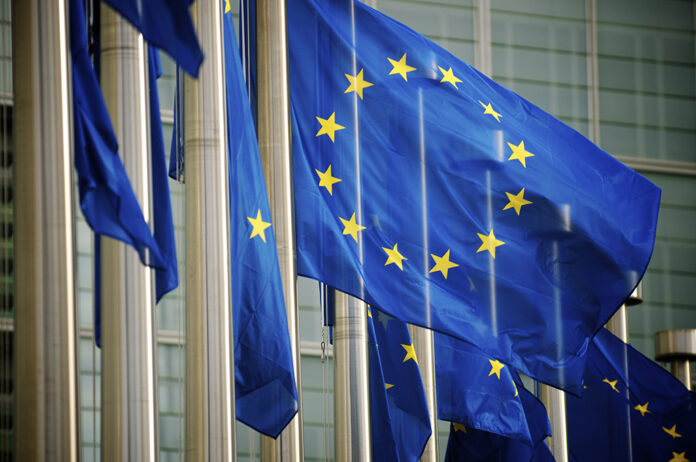This month, the European Commission (EC) is due to present policy proposals for screening outbound investments and updating existing EU regulations on inbound investment screening and dual-use export controls.
These are part and parcel of EU measures to “de-risk” trade and technology exchanges with China, even if not named as such.
The EC has identified 10 critical technology areas for the EU’s economic security. Four are priority areas:
- advanced semiconductors
- artificial intelligence (AI)
- quantum technologies
- biotechnologies
EU Vs. U.S.
Three of these four priority areas (biotechnologies are the exception) are also identified in President Joe Biden’s executive order of August 2023, “Addressing U.S. Investments in Certain National Security Technologies and Products in Countries of Concern.”
However, unlike the Biden administration, which listed only China, Macau, and Hong Kong on its initial list of “countries of concern,” the EC has specified that EU risk assessments would not be country-specific.
Brussels Vs. Member States
There is some constitutional ambiguity over the division of powers over export controls between the EU and its member-state governments, who hold various views about relations with China.
A 1995 CJEU ruling placed export controls under the Common Commercial Policy within the EU’s exclusive competence. However, many member states claim national control over implementation.
They want the list of items covered by the EU dual-use regulation exclusively drawn from control lists adopted by consensus under the EU’s four multilateral arms export control regimes: Australia Group, Missile Technology Control Regime, Nuclear Suppliers Group and Wassenaar Arrangement.
U.S. Unilateralism
U.S. officials increasingly criticize these regimes. Under Secretary Alan Estevez, who leads the Commerce Department’s Bureau of Industry and Security, said recently that EU processes are not keeping up with technological change.
U.S. public messaging around export controls targeting China’s access to semiconductors that the United States adopted in October 2022 and expanded a year later has emphasized protecting U.S. security without waiting for cooperation from U.S. allies, let alone coordination with the EU as a bloc or through the multilateral control regimes.
This perceived urgency is driving “mini-laterals.” Estevez has said that the United States is in preliminary talks with allied governments about a new export control regime for controlling cutting-edge technologies, including semiconductors and quantum computing.
However, these talks are unlikely to produce quick results.
Allied Intransigence
Despite long-running talks between the United States, Japan and the Netherlands over coordinating semiconductor controls, the Dutch government did not follow the October 2022 U.S. controls with its own unilateral measures until March 2023.
The October 2023 expansion of U.S. sanctions not only encompassed machines produced by the Dutch semiconductor leader ASML that were uncontrolled by the March Dutch regulation but also dropped the applicable U.S. content threshold to zero. This implies that Washington did not consider the Dutch controls adequate.
Nonetheless, this week, they elicited a stern rebuke from Beijing after the Dutch government revoked ASML’s export license for shipping NXT:2050i and NXT:2100i lithography systems to China.
TTC Troubles
Semiconductors and other critical technologies have been on the agenda of the EU-U.S. Trade and Technology Council (TTC), which has had multiple meetings over the last three years but has yet to produce notable results on coordinated controls.
One stumbling block has reportedly been the U.S. insistence that they specifically address China, an approach the European side opposes.
The TTC’s next (already twice delayed) meeting is scheduled for March 2024, after which the process will be paused pending the U.S. presidential election in November.
‘Chip 4’ Calculations
There is also no public evidence that the TTC agenda has been aligned with Washington’s talks with its East Asian allies, which are critical players in the semiconductor supply chain.
Estevez made his recent remarks at a forum in South Korea, which he said would be an essential player in any such novel control regime.
For some time, the United States, Taiwan, Japan and South Korea have discussed semiconductor supply chain issues in the “Chip 4” format. While bilateral tensions have increased, there has yet to be evidence of concrete outcomes from these talks.
Instead, public statements by South Korean officials have focused on the problems created for domestic firms in accessing U.S. markets due to the non-Chinese content requirements of the U.S. Inflation Reduction Act despite the dominance of Chinese firms in relevant supply chains.
Outlook
Europe and the United States will coordinate loosely and slowly, especially if Biden is re-elected president in November 2024. If there is a change of administration, U.S. unilateralism will likely gather pace rapidly.
In either case, European measures restricting technology access for Chinese entities will not keep pace with U.S. measures or be coordinated with U.S. allies in East Asia. For example, the EU’s top diplomat recently ruled out talks with Taiwan over bilateral trade, investment or supply chain resilience.
EU technology protection measures will likely continue to be driven by what Brussels views as its own national security and economic interests rather than a strategic priority for alignment with Washington against Beijing.


